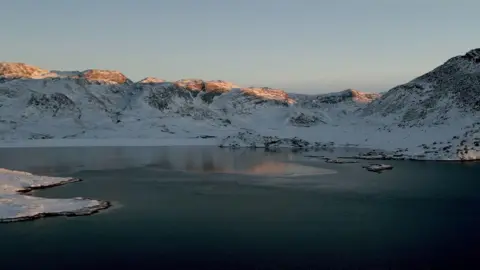 BBC
BBCThe sun rises over the ice-capped mountains of Nuuk Fjord, and we travel along one of the world’s last wild frontiers.
But there are shadows gathering here and across the rest of Greenland’s frozen expanses.
With Donald Trump becoming the President of the United States, his refusing to rule out taking Greenland by force echoes through conversations across the island.
“He’s certainly welcome to visit,” says the captain of the converted fishing boat that takes us east. Aware of having to do business with people of all political stripes, he asked not to be named, but used a phrase I hear here all the time.
“Greenland belongs to the Greenlanders. So Trump can visit it, but that’s it.”
The waters are calm as we enter the isolated village of Kapisillit – about 40 inhabitants – where several hunters set out to hunt seals.
It’s -16C (3F) now, and with the wind chill effect it feels more like -27C.
But near the harbor I meet a local church elder, Kaaleeraq Ringsted, 73, a great-grandfather, drying cod fillets caught in the fish-rich waters outside his front door.
When I ask him about President-elect Trump’s purchase or invasion of Greenland, he first laughs. Then his tone becomes serious.
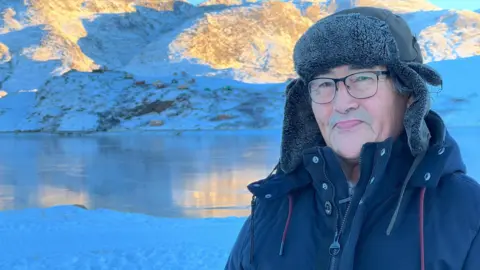
“It’s not acceptable for him to say that. Greenland is not for sale.”
Then he tells me how he learned to fish and hunt here with his father and grandfather and how he wants to preserve this life for his children and grandchildren.
Crossing the bay, the ship passed through broken surface ice. Two eagles sat on a rock looking for fish in the clear waters.
We went towards the farm of Angutimmarik Hansen, who keeps sheep, but also hunts seals, wild birds and rabbits.
All his winter sheep feed has to be imported from Denmark, a reminder of how the harsh climate defines the possibilities of life here.
Inside his front door is a rack of hunting rifles. He notices me looking at them.
“That’s in case there’s an invasion,” he jokes.
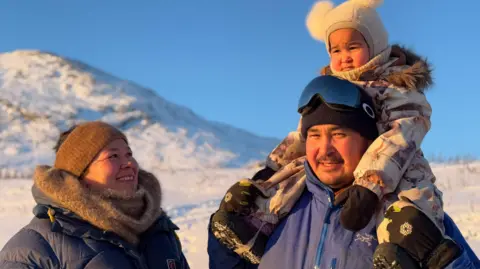
But his stance on the belligerent rhetoric from Mar-A-Lago is far from relaxed.
“What a stupid person in the world like Trump,” he says. “We will never sell Greenland.”
This small farm is about 3,000 miles (4,828 km) from Florida where the future US president held his now infamous press conference last week.
“But Trump is not the US. We can work with the people of the US,” says Mr Hansen.
Trump’s performance has gone overboard with arrival in Greenland of Donald Trump Jron the heels of his father’s statements. He flew into the capital city of Nuuk on the family’s 757 jet – Trump Force One – and stayed for four hours and thirty-three minutes, meeting some locals and making only polite remarks.
“It was incredibly nice to meet people and people were very happy to meet with us,” he said after lunch at a local hotel. “Dad will have to come here.”
Then we returned to the sunnier climes of Florida.
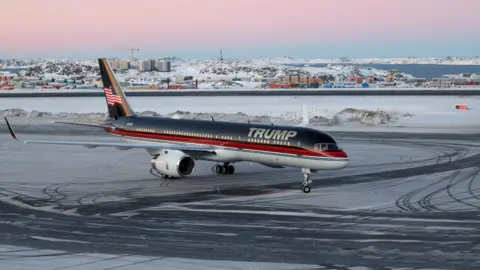 Reuters
ReutersTrump Jr. was welcomed by local businessman Jorgen Boassen, who at one time led the campaign for the newly elected president.
He told local media that he is Trump’s “biggest fan” and that “of course they are interested in our country, and they are welcome to come and see what our country is like. It is also about opening up for trade and cooperation.”
The city of Nuuk is the northernmost capital of the world. It has an advanced civil society and a strong press. There is some satisfaction here that Trump’s comments have propelled the Greenland independence debate onto the international stage.
There must be a Greenland that is not anyone’s colony, say activists like Kun Fencker, a member of the ruling coalition and a member of the local parliament’s Foreign Affairs and Security Committee.
We meet in the port, under the bronze statue of Hans Egede, the missionary from the 18th century who is seen here as the man who paved the way for colonization.
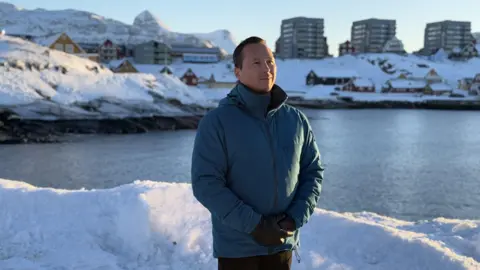
“Donald Trump is a politician,” says Mr. Fencker.
“He’s a tough businessman and we know his rhetoric, and that rhetoric is something we’ve gotten used to since 2019, and it’s just a matter of talking to a peer, an ally, about how we can resolve things here in the Arctic and also in NATO. “
Mr. Fencker offers the central argument of the independence fighters.
“Here it is necessary for Greenland as a sovereign state to negotiate directly with the United States, and not for Denmark to do it for us.”
Independence from Denmark could have a significant financial cost.
Greenland receives subsidies from Copenhagen worth about one fifth of its GDP each year. Mr. Fencker suggests, as do other leading figures here, that the island negotiate with America and Denmark for support.
“We are not naive in this matter. We need support in defense, security, but also economic development. We want a sustainable and self-sufficient economy.”
The editor of local newspaper Sermitsiaq, Maasana Egede, admits he was concerned by Donald Trump’s implied threat of force, but wants to see how the reality matches the rhetoric.
As for independence, Mr. Egede was frustrated by what he sees as a polarized debate in the media – local and international.
“We tell that story a lot that it has to be independence or no independence. But there’s all this story that’s in between, that people want independence, but not at any cost. There’s a standard of living that has to be maintained. There’s stores that have to be maintained. “
There is an expectation that at some point – not in the near future – there will be a yes vote and Denmark will accept the result.
The Prime Minister of the Island, Mute Egede, spoke at a joint press conference with the Danish Prime Minister, Mette Frederiksen, in the wake of Donald Trump’s latest comments.
“We don’t want to be Danes, we don’t want to be Americans, we want to be Greenlanders,” he said. The Danish prime minister was careful not to offend anyone, least of all the future American president.
“The debate about Greenlandic independence and the latest announcements from the US show us a lot of interest in Greenland,” she said. “Events that stirred many thoughts and feelings among many in Greenland and Denmark.”
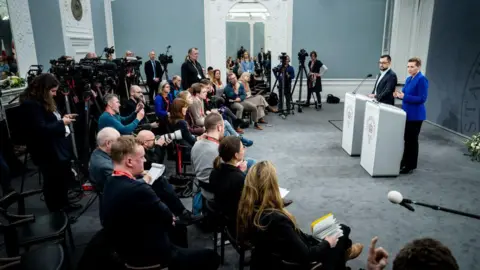 Getty Images
Getty ImagesMrs. Frederiksen knows very well how deep the feelings are in Greenland. Memories of injustice and racism remain fresh here among the indigenous Inuit people.
Scandals such as the campaign to insert IUDs (intrauterine devices) to prevent pregnancy in thousands of Inuit women and girls in the 1960s and 70s have haunted the relationship between Greenland and Denmark.
It is not known how many such procedures were carried out without the consent of those involved, but the numbers are considerable. The goal was to reduce the population of Greenland.
Maliina Abelsen is a former minister of finance in the Greenlandic government, and now a consultant for companies and organizations working on the island. She has also worked for UNICEF in Denmark and leading Greenland companies such as the seafood group, Royal Greenland.
Ms. Abelsen believes that much more needs to be done to address the injustices of the past.
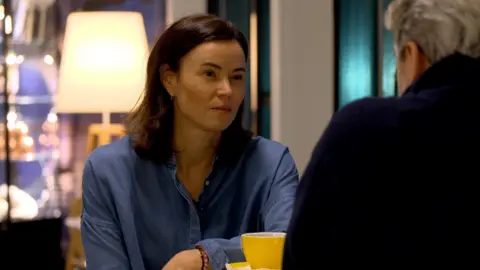
“I think a lot of people are saying, maybe the Danish government and the state said, ‘Oh, well, you know that happened in the past. That was so many years ago. How are we going to be responsible for that? It’s time to move on.’
“But you can’t move forward if you’re not healed and if you’re not acknowledged for what happened to you. It’s a job we have to do together with Denmark, not something Greenland can do alone.”
Despite her own high profile in civil society and business, Maliina Abelsen says that when it comes to racism – for example jokes about Inuit – she “can speak for the majority of Greenlanders, that we’ve all experienced it in our lives”.
Issues of self-determination and dealing with the past are intimately intertwined.
Now Donald Trump’s intervention has put both before the eyes of the world.
But the message we heard – from remote fjord settlements to the capital Nuuk – is that Greenland’s fate must be decided here, among people whose voices have been ignored for too long.
With additional reporting by Adrienne Murray and Kostas Kallergis.

